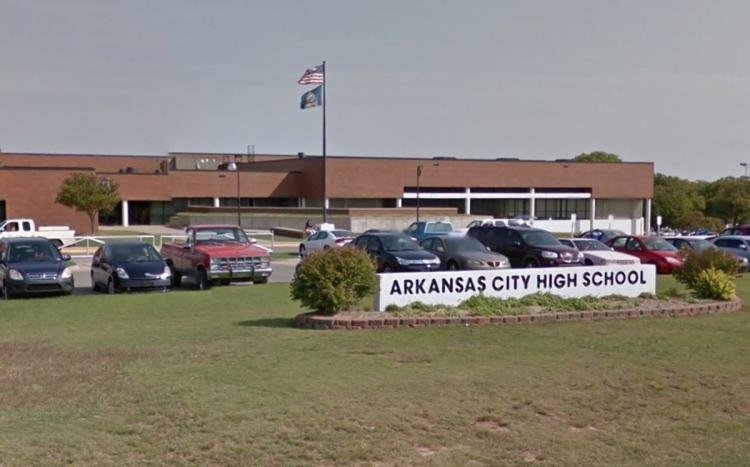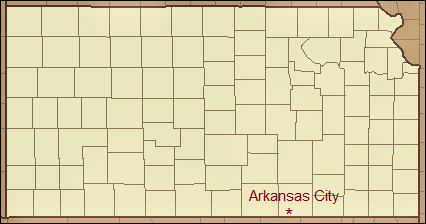
ARKANSAS CITY, KS lies in the peninsula formed by the meeting of the wide Arkansas and swift Walnut Rivers, in Cowley County, one of 105 counties in Kansas. Prior to July 15, 1870, settlers in this part of the country were on Indian land and were obliged to pay head rights to Chetopa, Osage Indian Chief. But when Osage lands were opened for settlement on July 15, 1870, claims were accepted. The town of Arkansas City was surveyed in 1870. The year 1872 saw incorporation of the town and the Santa Fe Railway extended its line from the north on December 3, 1879.
Arkansas City has played a vital role in the territorial development of Indian lands to the south in the state of Oklahoma. Arkansas City was the starting point, i.e. the Run of 1889 and the even more exciting event in 1893 when the renowned Cherokee Strip was opened. The prize on this occasion was 8,000,000 acres of fertile ranch and farm lands. The starting point was the Kansas –Oklahoma border – four miles south of Arkansas City. Some months prior to the big land race, Arkansas City was the rendezvous point of 100,000 eager settlers who made plans and “big deals” before the first pistol shots were fired signaling the start of the race on September 16, 1893.
ARKANSAS CITY SCHOOL HISTORY - In April 1870, the first school was organized under the tutelage of Professor H.B. Norton in his home, at the corner of Birch Ave. & A St.
In 1872, the first common school was constructed out of wood, at 205 S. Summit St., at the cost of $400.
In 1874, the common school was moved to a new brick and stone building called the First Ward School, located in the 300 block of North B St., at a cost of $10,000.
The first graduating class from Arkansas City was in 1880.
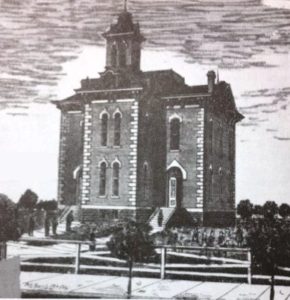
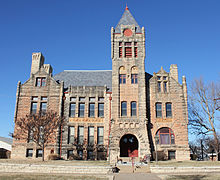
First Permanent High School ("The Red Schoolhouse") - The first permanent high school in Arkansas City was opened in 1893, with 193 students enrolled. In building the school, architects called for the use of vermillion pigment in the mortar by the masons. Weatherproof pigment was not used, and the rains caused the color to run, giving a crimson tint to the stones. Thus came the nickname for the building, 'The Red Schoolhouse". The high school was built at an overall cost of about $38,000.
Manual Training School - In 1903 the Kansas Legislature enacted a law allowing extra taxes to be levied for the establishment of an industrial training department in high schools.
In 1910, the Board of Education approved the construction of the Manual Training Building at 200 S. 3rd St. The facility was a three-level structure, planned for vocational training, music, art, and added space for classrooms and offices. Classes began September 1912, and the cost of the building was $50,000.

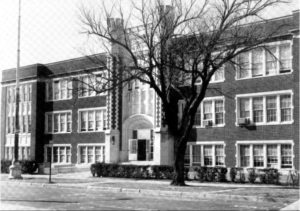
Senior High School - In 1922 the Arkansas City Senior High School was completed in the 200 block of South Second St. The new building was immediately east of the Junior High School. The new school contained 87,547 square feet of space, at a cost of $250,000. During it's sixty year history, the Ark City High School endured the 'great depression', 'dust bowl', World War II, the Korean War, and the Vietnam War.
The Senior Steps, and Sally the mascot, will forever be in the minds and hearts of the students who attended these hallowed halls.
The New High School - With deteriorating conditions at the high school, coupled with increased enrollment, plans for a new high school were born. In 1971 an agreement was reached between Cowley County Community College and USD 470, and the college made a $68,000 payment and transferred the land on West Radio Lane in exchange for "The Red Schoolhouse" and Galle-Johnson Hall.
By the end of 1982, the new high school was ready for occupancy, and on January 3, 1983 students and faculty moved into the $10,200,000 facility.
